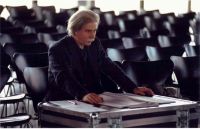
Composers
- bio - recordings - repertoire
Page 66 of Second Symphony for 21 pianos
for 21 pianos
Instrument: Piano
Well-known internationally for his uncommon repertoire, Daniele Lombardi has worked extensively on the music of the twentieth-century historical avant-gardes, including first modern performances of a large number of compositions of Italian and Russian Futuristic music, as well as composers such as George Antheil, Leo Ornstein, Alberto Savinio, Alexander Mossolov, and Arthur Vincent Lourié.
The musicological interest underlying this research has led him to write on this subject articles and the book Il suono veloce. Futurismo e futurismi in musica (Ricordi-Lim, Milan 1996).
He is also an expert in contemporary musical notation and performing praxis (see his books: Spartito preso, Vallecchi, Florence 1981 and Scrittura & suono, Rome 1984). His extensive repertoire includes many works written in the last years, and many compositions which have been dedicated to him.
Daniele Lombardi has always been deeply interested in a multimedia concept of art. His education, in both music and the visual arts, has placed him in the position to incorporate sign, gesture, and sound into a unitary concept of multiple perception, through analogies, contrasts, stratifications, and associations.
The drawings, paintings, computer graphics, videos, which he has been producing since 1969, are the results of the transcodification of musical thought into images, a visualization of energies lying behind the sound itself, as potential becoming.
In 1972, at Como Festival "Autunno musicale", he exhibited for the first time what he defines as Notazioni di fatti sonori che l'esecutore ricrea nella propria immaginazione (Notations of sound events which the performer recreates in his own imagination) to be contemplated in silent meditation by a normal audience, used to listening to music at concerts (Ipotesi di teatro metamusicale).
From the experiences of those days to the virtual reality of the present, Lombardi believes visual expression and sound to be inseparably joined and his research ranges between abstract inner visions and the idea of an impact on everyday life, between the ready-made and the mirage, as in his recent La luce, a melologue on texts by Pier Paolo Pasolini, in which a background of sound includes environmental noise from Pasolini's films.
In Mitologie while the four pieces for piano are performed the signal sent from the microphone to a liquid crystal screen modifies on it the chromatic spectrum, in real time (Hans Jodl, Kaiserlautern University).
In his First Concert for violin and orchestra (St. Petersburg 1988, Spivakov, Lombardi, Moskow Virtuosi) and in Impromptwo (Colmar 1993, Spivakov, Moskow Virtuosi) lasers with optic fibres have been used, visualizing the performing gesture and the movement of the bow. In Il violino di Antonia a piece for ensemble accompanies a video by Lombardi himself. Atalanta Fugiens (Rimini, Rocca Malatestiana and Milan, Castello Sforzesco, 1990) is a huge work for 50 sound sources, 50 sculptures and as many short texts which reread the alchemy book by Michael Mayer (1617) bearing the same title.
Some of his works are in the form of mixed media:
Faustimmung (Florence, 1987, G.A.M.O., Spedale degli Innocenti), Amor d'un'ombra e gelosia d'un'aura (Rome 1988, Teatro Ghione), and L'ora alata (Celle 1992).
Lombardi also performs his own compositions for piano and sometimes his recitals present unusual profiles historically linking romantics such as Chopin or Heller to contemporary music.
He has been performed in a great number of concert halls and festivals such as Maggio Musicale Fiorentino, Venice Biennale Musica etc., in different countries, and for important radio and television broadcasting companies.
For several years he has directed the festivals Nuova Musica Italiana and Nuova Musica Internazionale in Rome (Coop. La Musica, RAI). He has founded and directed together with Bruno Nicolai the magazine of contemporary music 1985 "La Musica" and has been artistic director of the music publishing company Edipan.
In 1998 he was the first artist invited by SMAC (Metropolitan System for Contemporary Art) to present his multimedia work for Regione Toscana with exhibitions and concerts: at Prato (Pecci Museum), Pistoia (Fabroni Museum), and Florence (performance of the Two Symphonies for 21 pianos at the Uffizi Courtyard).
He has recorded many CDs (Edipan, Arte Nova, Col Legno, Musica & Immagine, Nuova Era, etc.)
He teaches piano at the Conservatoire "G. Verdi" in Milan.
